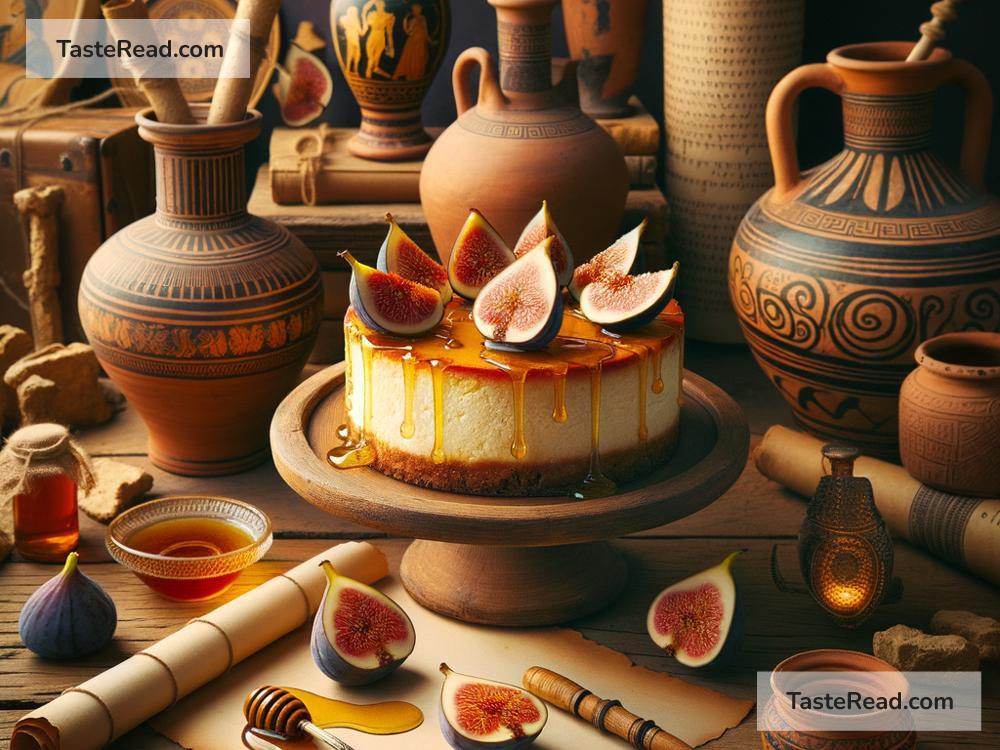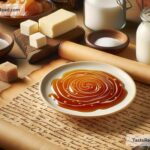The Origins of the First Cheesecake in Folklore
Cheesecake is a dessert loved around the world. Its creamy texture and delicious flavors have been bringing smiles to people’s faces for centuries. But did you know that cheesecake has a rich history that goes back thousands of years? While the exact origins of the first cheesecake aren’t fully known, stories, myths, and folklore give us clues about how this beloved dessert may have started.
Cheesecake in Ancient Times
Historians believe the earliest version of cheesecake may have been made by the ancient Greeks around 2,000 B.C.! According to folklore, cheesecake was used as food for athletes during the first Olympic Games in 776 B.C. It was considered a great source of energy and strength. The recipe was simple—cheese, honey, and wheat flour were mixed together and baked into a cake.
Greek scholars even wrote about cheesecake. For example, the ancient Greek doctor Aegimus reportedly wrote a book about the art of making cheesecake, showing how the dessert had already earned high praise even back then.
From Greece, cheesecake spread to the Roman Empire. The Romans adopted the cheesecake recipe and gave it their own twist. They called it “libum,” which was a type of small, baked cheesebread used as an offering to the gods in religious ceremonies. Roman cheesecakes often included eggs to make them firmer. Over time, the Romans brought cheesecake with them as they expanded their empire, introducing the recipe to Europe.
Cheesecake in Medieval Europe
Cheesecake folklore continued to evolve in medieval Europe. During this time, people experimented with different ways of making cheesecake. They used soft farmer’s cheeses and added ingredients like dried fruits, spices, and nuts to enhance the flavor.
In England, cheesecake recipes began showing up in cookbooks in the 14th century. One old English recipe from the 15th century used eggs, curd cheese, sugar, and butter, baked in a pastry crust—similar to the cheesecakes we know today. These recipes reflected a shift from cheesecake as a rustic dish into one enjoyed by royals and the upper class at banquets and celebrations.
Interestingly, some folklore suggests cheesecake may have also been served at weddings or special ceremonies, symbolizing good fortune and prosperity.
Cheesecake Goes to America
Cheesecake traveled to the New World, thanks to European settlers. Early American cheesecake recipes were similar to European ones, often made with simple cheeses like cottage cheese or ricotta. However, the cheesecake we know today—creamy and rich—didn’t become popular until the late 19th century.
A significant event in cheesecake history happened in 1872. A man named William Lawrence, from Chester, New York, accidentally created cream cheese while trying to make a French cheese called Neufchâtel. This new creamy cheese became an instant hit in America. Soon, bakers started using it to make cheesecake, leading to the creation of the modern version of this dessert.
Folklore Around Cheesecake’s Magic Powers
While many stories about cheesecake revolve around its history, some folklore suggests cheesecake has special powers. In ancient Greece and Rome, cheesecake was sometimes associated with fertility and health. People believed eating cheesecake could bring good luck or even success. For example, athletes were given cheesecake before competitions to help them perform well.
In medieval times, some believed cheesecake could bring happiness or strengthen relationships. Folktales in certain European countries feature enchanted cheesecakes made with magical ingredients that could heal broken hearts or unite lovers.
Today, cheesecake may not be seen as magical in the same way, but it certainly has the power to make people happy when they taste it!
Modern Cheesecake Around the World
Cheesecake has come a long way since its origins in ancient folklore. Today, different cultures prepare cheesecake in unique ways, putting their own spin on the recipe.
For example, Japanese cheesecake is famous for its light, fluffy texture, almost like a soufflé. In Italy, ricotta cheesecake (often called “Torta Ricotta”) is a popular dessert. In Germany, “Käsekuchen” is made with quark cheese, giving it a tangy flavor. And in America, New York-style cheesecake, made with cream cheese, has become world-renowned for its richness and smoothness.
The Sweet Connection Between Past and Present
Cheesecake isn’t just a dessert; it’s a symbol of cultural connection. From ancient Greece to modern kitchens, it has evolved through history and folklore, bringing people together with its universal appeal. While we may never know the exact story of the first cheesecake, it’s fascinating to imagine how early people discovered this delightful treat through trial and error—and maybe even by accident!
So, next time you take a bite of cheesecake, remember that you’re not just eating dessert. You’re enjoying a piece of history, shaped by legends, cultures, and centuries of culinary creativity. Cheesecake is truly a testament to humanity’s love for sweet and satisfying food.
Cheesecake has proven that even the simplest ingredients—cheese, honey, and wheat—can have a legacy that spans the globe. Whether you prefer New York-style, Italian ricotta, or Japanese soufflé cheesecake, each version reminds us of its ancient roots and magical journey through time.


